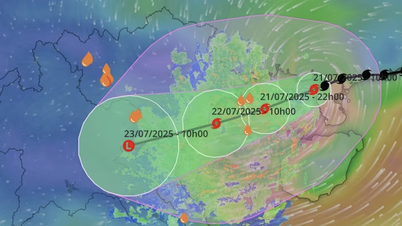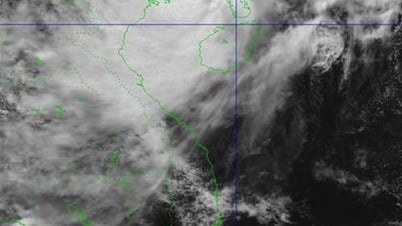
The surprising discovery of the most distant galaxy in the universe is stirring up the scientific community and raising big questions about the mechanism of galaxy formation in the early period - Photo: NASA
The newly identified galaxy, named MoM-z14, is now the most distant galaxy ever confirmed using spectroscopy, according to a study published on arXiv.
With a redshift of 14.44, MoM-z14 surpasses the previous record holder, JADES-GS-z14-0 (redshift 14.18). This figure shows that the light from MoM-z14 departed from the early universe, just 280 million years after the Big Bang, and after a journey of tens of billions of light years, reached James Webb's infrared sensors.
"This is an exciting discovery. It confirms that there were very bright galaxies from the very early days of the universe," said astrophysicist Charlotte Mason (University of Copenhagen, Denmark).
Since its launch in 2022, James Webb has consistently discovered more bright ancient galaxies than scientists initially expected. These findings have forced researchers to reconsider theories about galaxy formation in the first 500 million years of the universe.
"This unexpected galaxy population is stirring up the scientific community and raising big questions about the mechanisms of early galaxy formation," the team wrote in the publication.
MoM-z14 is identified as a galaxy only about 240 light-years across, 400 times smaller than the Milky Way, and about the same mass as the Small Magellanic Cloud, a satellite galaxy of ours.
Despite its small size, MoM-z14 is extremely bright, and was observed to be undergoing a burst of star formation. Its chemical composition is also rich in nitrogen, similar to ancient globular clusters in the Milky Way. This suggests that stars may have formed in a similar way in the very early universe.
Researchers say MoM-z14 is just the beginning. More high-redshift galaxies are likely to be discovered in the near future, especially when the Nancy Grace Roman Space Telescope, which is capable of large-scale surveys, launches in 2027.
However, James Webb himself may break his own record before the Roman telescope is operational.
"Cosmic redshifts once thought impossible are no longer so far-fetched. James Webb is opening entirely new chapters in the exploration of the early universe," the astronomers concluded.
Source: https://tuoitre.vn/kinh-vien-vong-james-webb-phat-hien-thien-ha-xa-nhat-vu-tru-20250529113354497.htm


























![[Photo] National Assembly Chairman Tran Thanh Man visits Vietnamese Heroic Mother Ta Thi Tran](https://vphoto.vietnam.vn/thumb/1200x675/vietnam/resource/IMAGE/2025/7/20/765c0bd057dd44ad83ab89fe0255b783)










































































Comment (0)